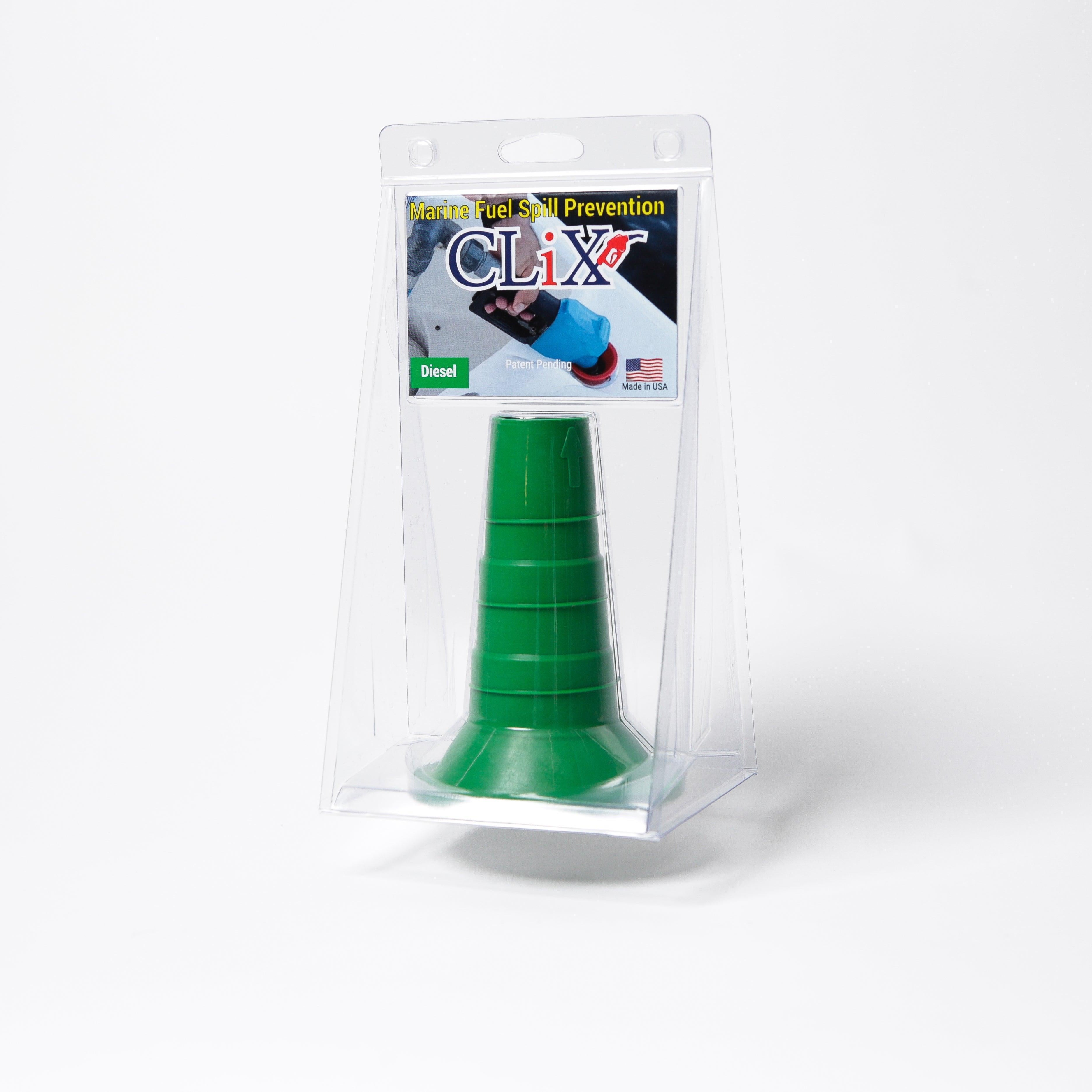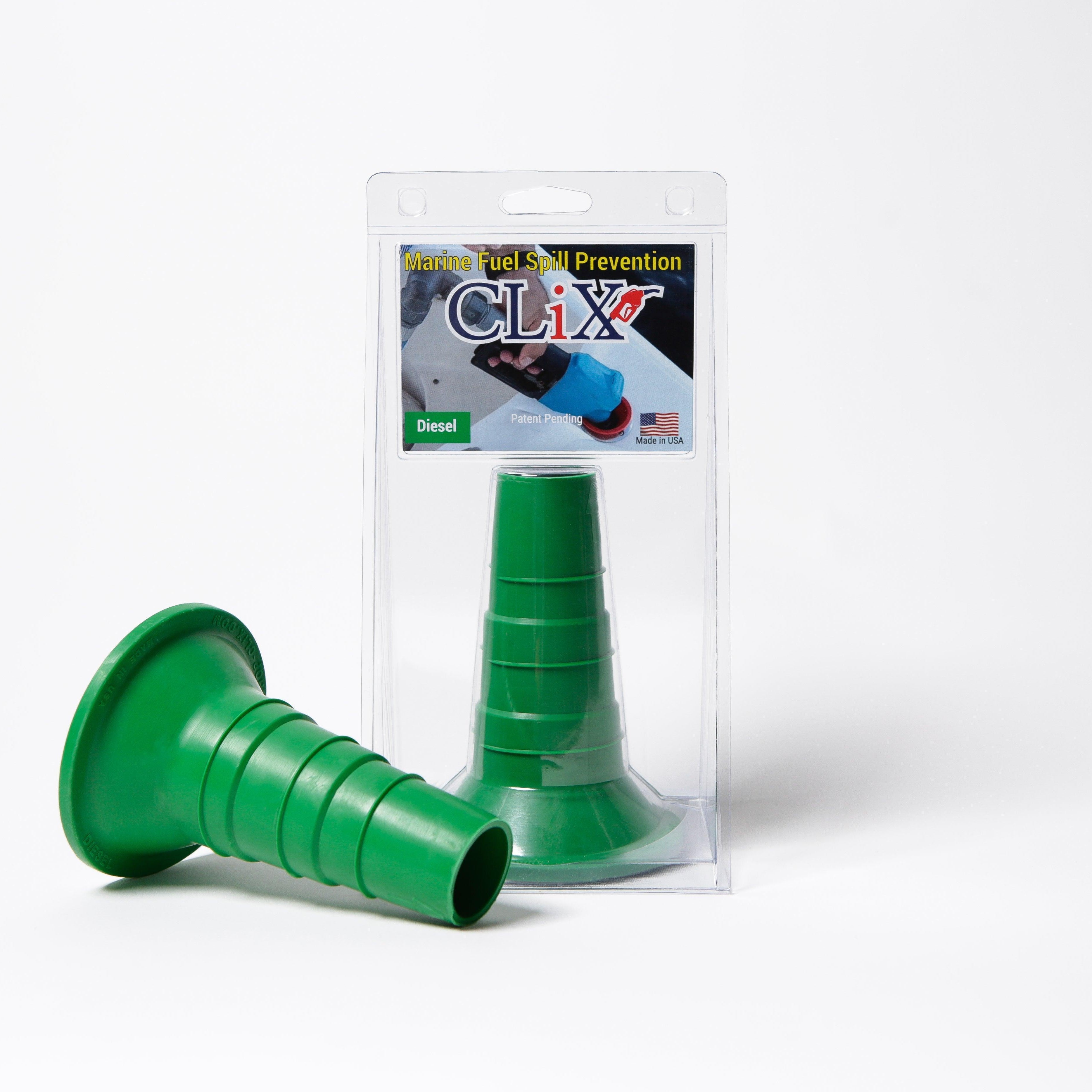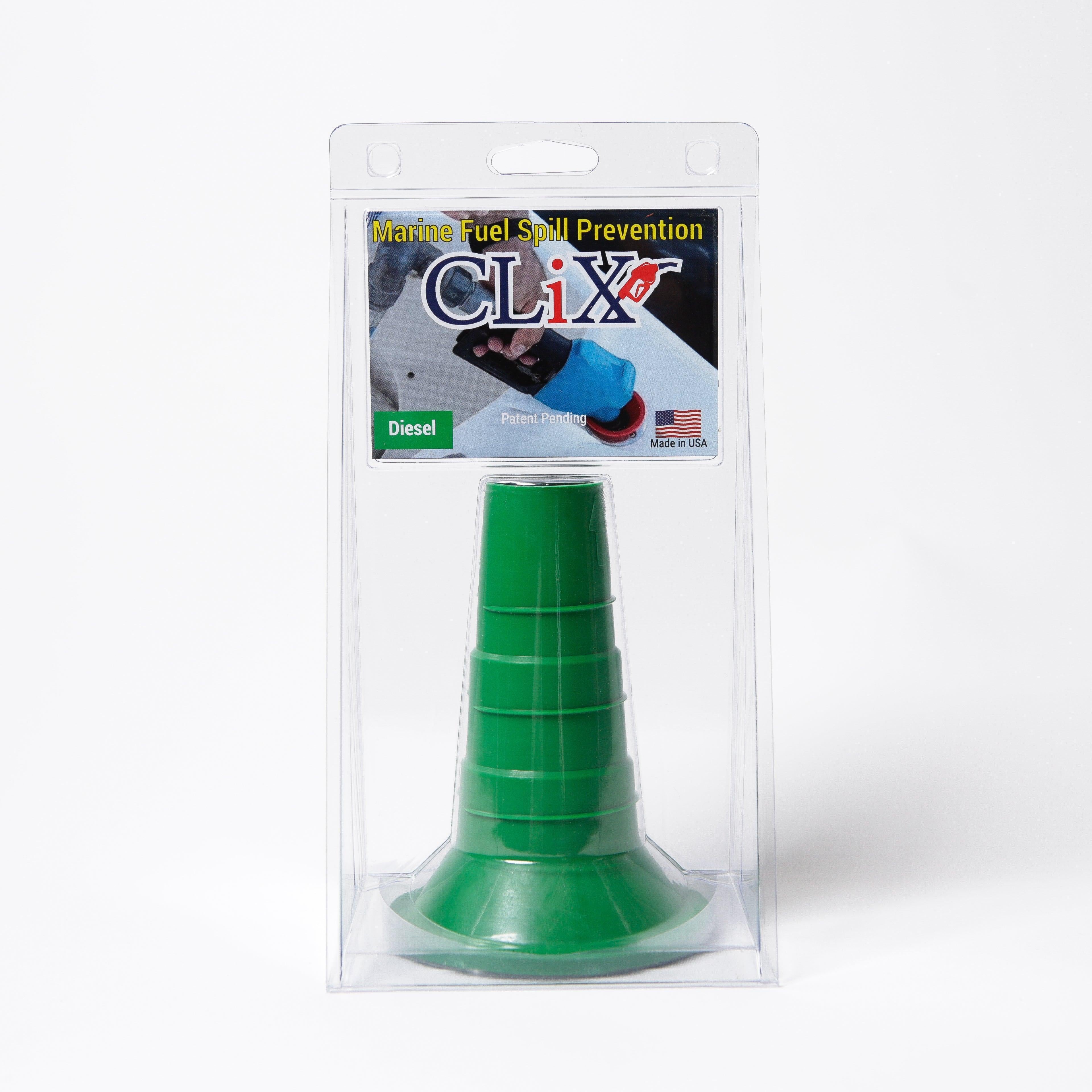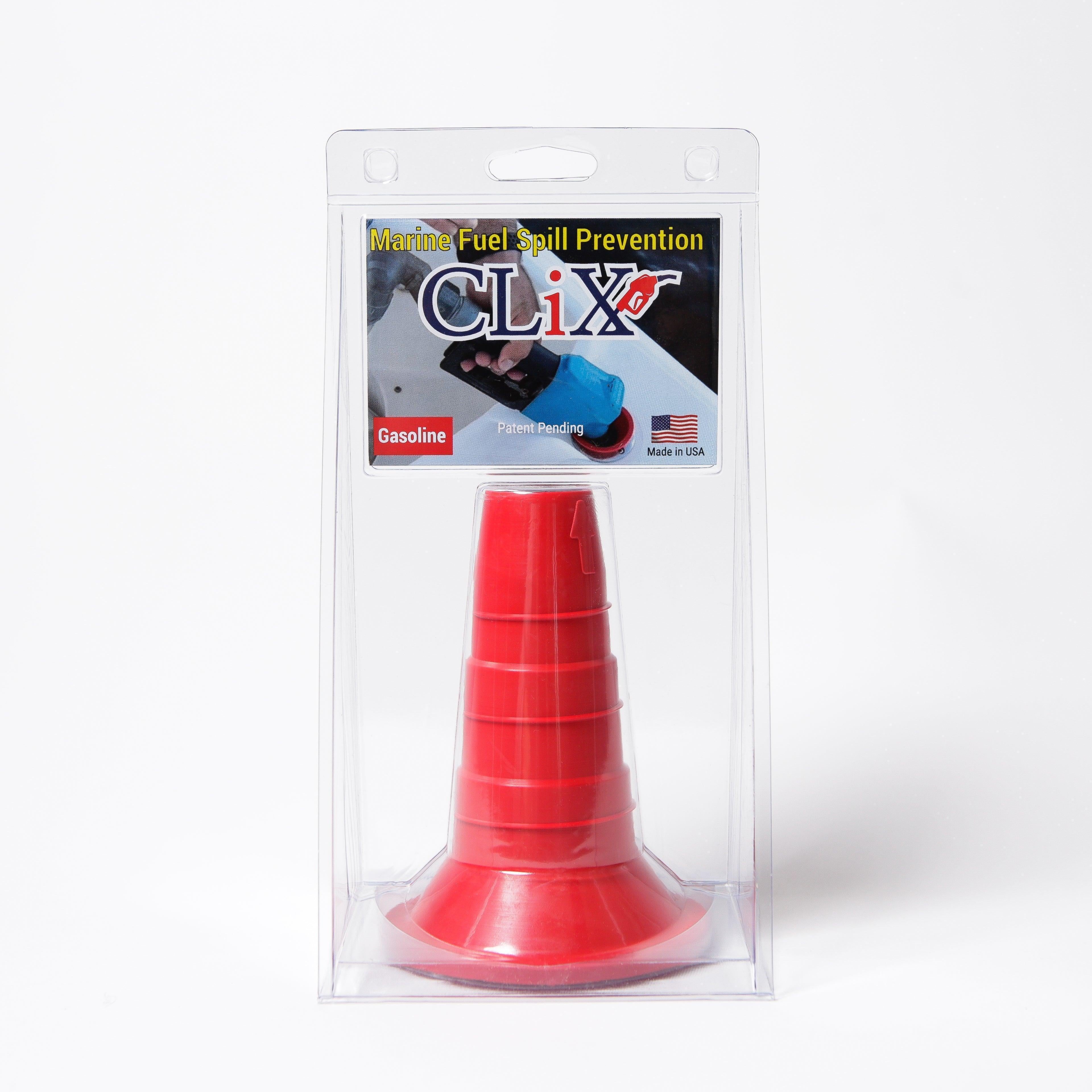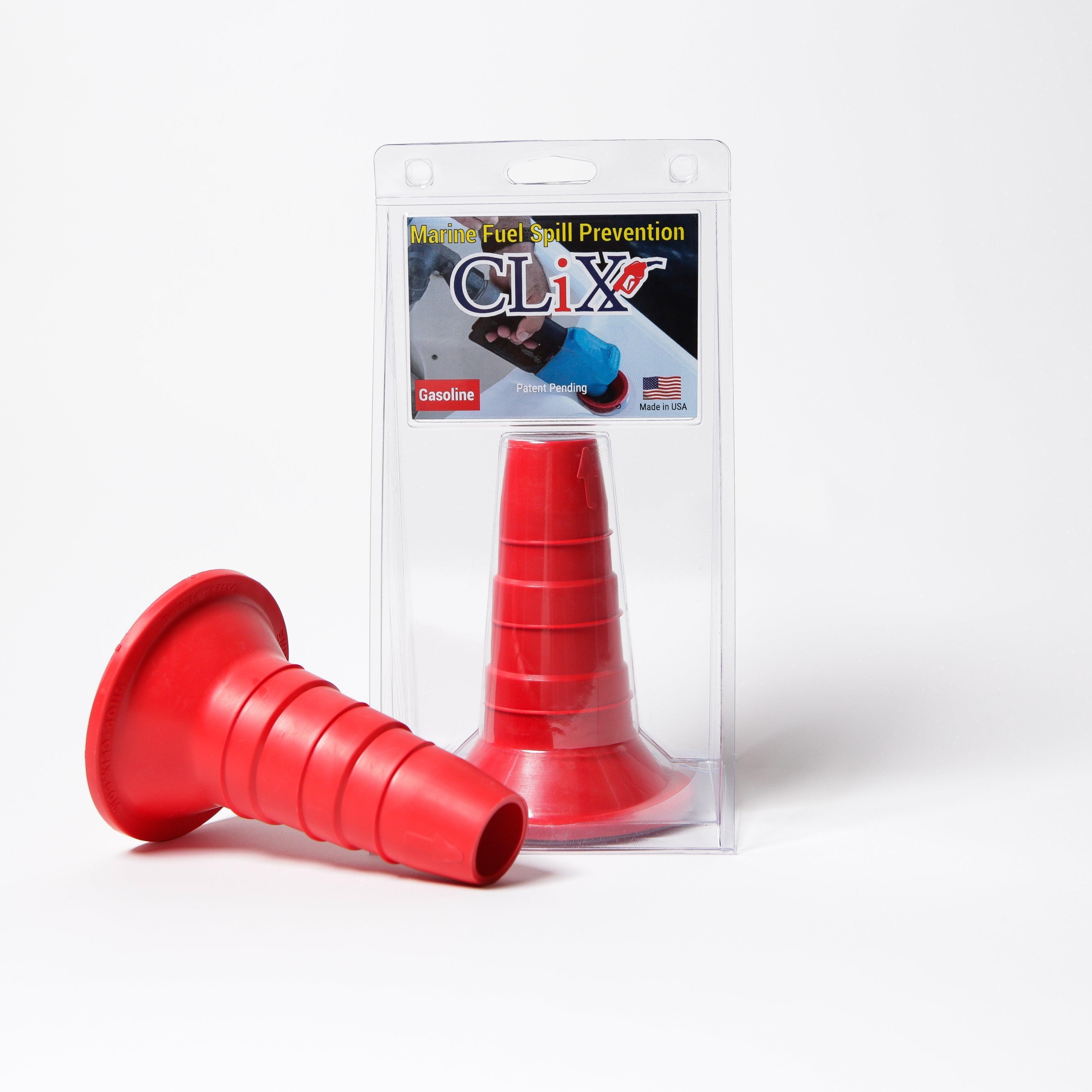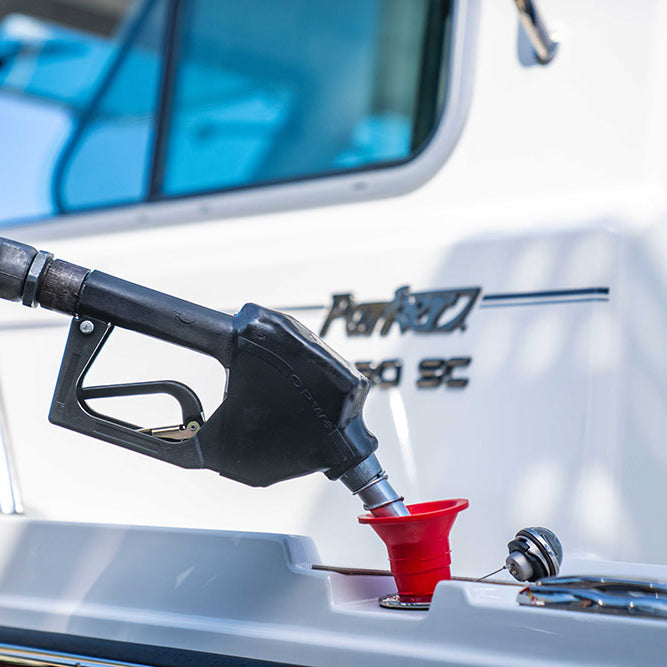Ever tried to refuel a boat from a heavy gas can while it's bobbing in the water? Or top off a tractor in the middle of a field? If so, you know the struggle—it’s awkward, messy, and often a little dangerous. That’s where a gas tank transfer pump comes in.
Think of it as a smart, powerful siphon that does all the work for you, minus the mess and the risk. It’s a specialized tool built to move fuel from one container to another, safely and quickly. For anyone in farming, construction, boating, or even off-road motorsports, this isn't just a gadget; it's an essential piece of equipment.
Understanding the Purpose of a Gas Tank Transfer Pump
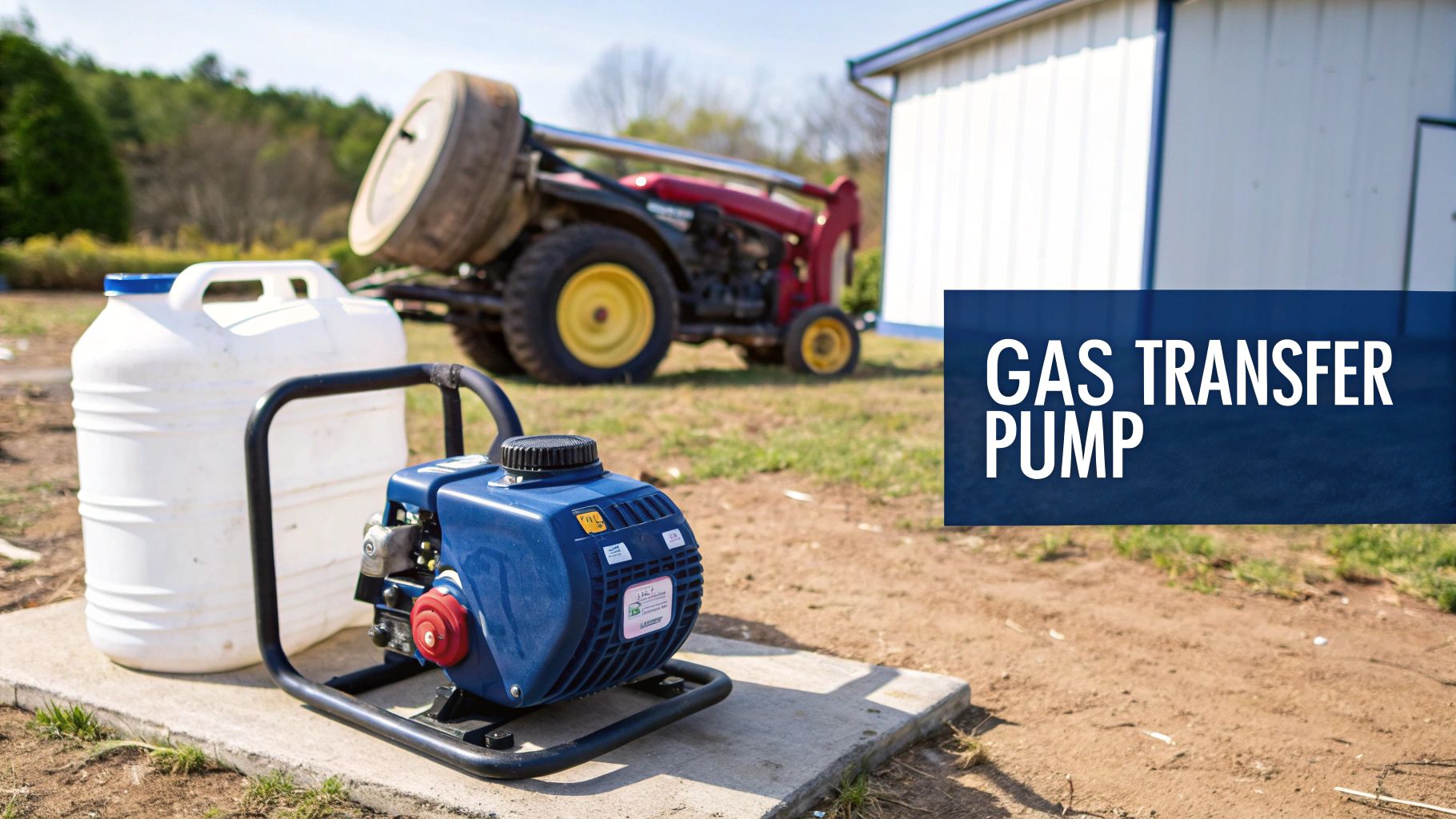
At its heart, a gas tank transfer pump solves a very common problem: how to move flammable liquids without spilling them everywhere. The old-school method of hoisting a heavy fuel can and hoping for the best is a recipe for disaster. A dedicated pump turns that messy chore into a clean, controlled, and fast process.
Picture a contractor needing to keep a generator running on a remote job site. Or a boat owner trying to add fuel from a jerry can without polluting the water. These are the real-world moments when a gas tank transfer pump proves its worth, making the job simple and safe.
The Core Problems It Solves
This tool is much more than a convenience; it tackles several serious challenges head-on. It's engineered to make mobile refueling practical, safe, and efficient.
Here's what a transfer pump really does for you:
- Prevents Spills: The secure connections and steady flow mean fuel goes where it’s supposed to—in the tank. This is not only better for the environment but also saves you from wasting expensive fuel.
- Improves Safety: Forget about the dangerous old trick of mouth-siphoning (which risks swallowing toxic fuel) or straining your back lifting heavy containers. A pump eliminates those risks entirely.
- Saves Time and Effort: A task that used to involve several minutes of awkward, heavy pouring can now be done in a fraction of the time. Just flip a switch or turn a crank, and you're done.
A gas tank transfer pump isn't just a tool; it's a safety system. It turns a hazardous task into a managed procedure, protecting both the user and the environment from the risks of handling fuel.
This shift toward safety and efficiency isn't just anecdotal. The global market for fuel transfer pumps was valued at around USD 6.49 billion and is expected to climb to USD 10.12 billion by 2035. A big reason for this growth? Stricter environmental rules are pushing people toward safer fuel handling practices. For more on these trends, you can find detailed reports on sites like Market Research Future.
Using a dedicated pump is a smart move, protecting both you and your wallet. Let's break down the key advantages over risky, old-fashioned methods.
Why You Need a Gas Tank Transfer Pump
| Benefit | Description | Why It Matters |
|---|---|---|
| Safety First | Eliminates direct contact with fuel and the need to lift heavy cans. | Reduces the risk of chemical exposure, fire hazards, and back injuries. |
| Spill Prevention | Creates a sealed, controlled system for moving liquids. | Protects the environment from contamination and prevents costly fuel waste. |
| Time Savings | Transfers fuel much faster than gravity-fed methods or manual pouring. | Gets your equipment refueled and back to work quickly, boosting productivity. |
| Effortless Operation | Electric or manual pumps do the heavy lifting for you. | Turns a physically demanding chore into a simple, straightforward task. |
In short, a transfer pump makes refueling a professional, clean, and safe process from start to finish.
Who Benefits Most from This Tool
While almost anyone who handles fuel can use one, some people truly can't live without it.
Contractors on job sites depend on them to keep heavy machinery and generators fueled up without downtime. Motorsports junkies need them to refuel ATVs, snowmobiles, and dirt bikes far from any gas station. And for anyone on the water, these pumps are a must-have for safe, eco-friendly refueling.
At the end of the day, if you ever need to move gasoline, diesel, or kerosene from a storage can into a tank, this tool offers a brilliantly simple solution to a common and often frustrating problem.
How a Fuel Transfer Pump Actually Works
Ever wondered what's really going on inside that pump when you flip the switch? It might seem like some kind of mechanical wizardry, but the principle behind it is surprisingly straightforward. At its heart, a fuel transfer pump is just a machine designed to create a pressure difference.
Think about using a straw. When you sip, you're lowering the air pressure inside the straw. The higher pressure of the atmosphere outside then does the work, pushing your drink up into your mouth. A fuel pump operates on the very same idea, just using mechanical parts instead of your lungs.
It creates a low-pressure area at the inlet and a high-pressure area at the outlet. This difference is what pushes and pulls the fuel from one tank to another, making the whole process worlds safer and more efficient than just trying to pour it and hoping for the best.
The Key Parts Working in Harmony
To make this pressure magic happen, a few essential parts have to work together perfectly. When you understand what each piece does, the whole system suddenly makes a lot more sense.
The main players inside a typical electric gas tank transfer pump are:
-
The Electric Motor: This is the muscle. It’s the powerhouse of the whole operation, whether it’s a 12V DC model running off a vehicle battery or a 120V AC version plugged into a wall. Its one job is to provide the spinning force.
-
The Impeller or Vanes: This is the part that does the heavy lifting. Attached to the motor, an impeller is a rotor with blades that spins incredibly fast, slinging fuel outward with centrifugal force. Some pumps use vanes instead, which are little blades that slide in and out to trap pockets of fuel and shove them toward the outlet.
-
The Pump Housing: This is the tough outer casing that holds the impeller or vanes. It’s not just a simple box; its internal shape is engineered to channel the fuel from the inlet to the outlet, building up pressure along the way.
-
Inlet and Outlet Hoses: These are the fuel's highways. The inlet hose gets dropped into your source tank (like a jerry can or drum), while the outlet hose, usually fitted with a nozzle, delivers the fuel right where it needs to go.
So, when you turn it on, the motor spins the impeller at a high RPM. This action quickly pushes air and fuel out of the inlet side, creating that all-important suction.
A gas tank transfer pump's entire job is to create an imbalance. By making the pressure low on one side and high on the other, it forces fuel to move from where it is to where you want it to be—all inside a closed, safe system.
This "mechanical siphoning" is what lets you move dozens of gallons in just a few minutes, without the mess and danger of spills. To see how these pumps fit into larger setups, our guide on comprehensive fuel transfer systems goes into even more detail.
A Step-by-Step Look at Fuel Flow
Let's walk through it. Imagine you’re on a dock, about to refuel your boat from a portable fuel caddy.
First, you drop the inlet hose into the caddy and place the nozzle from the outlet hose into your boat's fuel tank. The second you switch on the pump, the motor kicks into gear, spinning the impeller.
As it spins, it shoves the air inside the pump and the inlet hose out through the nozzle. This creates a vacuum—a low-pressure zone—inside that inlet hose.
Now, the normal atmospheric pressure pushing down on the fuel in the caddy is much, much stronger than the pressure inside the hose. This differential is what pushes the fuel up the hose and into the pump housing.
Once inside, the fuel is caught by the spinning impeller, which flings it with serious force toward the outlet. A steady, powerful stream of fuel now flows down the outlet hose, through the nozzle, and safely into your boat. This happens almost instantly and keeps going at a consistent rate as long as the pump is running.
Comparing the Different Types of Gas Transfer Pumps
Picking the right gas tank transfer pump is a lot like choosing any other tool for a job. You wouldn't use a tiny hand saw to build a house, right? The same logic applies here. The best pump for you boils down to what you need it to do, and the options become much clearer once you understand the three main players on the market.
Each pump type is built around its power source, which has a direct impact on its portability, how fast it moves fuel, and where you can use it. We'll walk through manual hand pumps, the ever-popular 12V DC electric pumps, and their heavy-duty 120V AC cousins to help you find the perfect fit.
This simple infographic shows you the basic idea behind how an electric pump gets the job done.

As you can see, the motor spins an impeller, which creates the suction and flow needed to move fuel safely and quickly. It’s a pretty straightforward process that makes all the difference.
Manual Hand Pumps
Manual pumps are the simplest and most dependable of the bunch. Think of them as the old-school, hand-cranked can openers of the fuel transfer world—no electricity needed, just a little muscle. They usually work with a rotary crank or a simple lever action.
These pumps are fantastic for small jobs or as a "just-in-case" backup. Their biggest selling points are portability and pure simplicity. You can toss one in your truck or boat and never have to worry about finding a power outlet or a charged battery.
Of course, that strength is also their main weakness. Your flow rate is only as fast as you can pump, so they aren't the best choice for moving large amounts of fuel in a hurry.
- Best For: Emergency top-offs, fueling small engines like lawnmowers or generators, or any situation where you're off the grid.
- Typical Flow Rate: 2-5 GPM (Gallons Per Minute), depending entirely on your elbow grease.
- Pros: Super portable, no power required, affordable, and mechanically simple.
- Cons: Slow, requires physical work, and not practical for large tanks.
12V DC Electric Pumps
The 12V DC pump is easily the most versatile and popular kid on the block. These models are designed to hook right up to a vehicle's battery with alligator clips, making them the undisputed champion of mobile refueling.
Need to fuel up a tractor out in the field, a boat at a remote dock, or an ATV deep in the woods? A 12V pump is your new best friend. It offers a fantastic mix of power and portability, giving you a solid flow rate without being tethered to a wall outlet.
This flexibility has made 12V pumps a staple in farming, construction, and recreation. In fact, the global market for automotive fuel transfer pumps hit an estimated USD 2.5 billion, with major growth expected. Electric models, especially 12V units, are a huge part of that trend because they're efficient and help cut down on spillage. You can get more details on the fuel pump market and its growth from this GM Insights report.
A 12V DC pump strikes the perfect balance between power and portability. It delivers the speed of an electric motor while giving you the freedom to refuel almost anywhere you can take a vehicle.
This do-anything, go-anywhere capability makes it the workhorse for contractors, farmers, and anyone who needs reliable performance away from the garage.
120V AC Electric Pumps
When you need to move serious amounts of fuel and you have a standard electrical outlet nearby, the 120V AC pump is the king. These are stationary powerhouses, typically mounted directly onto large storage tanks or drums in a workshop, on a farm, or at a marina.
Think of this as your own personal, permanent refueling station. With much higher flow rates than their 12V counterparts, 120V pumps can fill large vehicle or equipment tanks in a fraction of the time. They're built for high-volume, repetitive jobs where speed is everything.
The catch, of course, is that you're tied to an AC power source. That makes them a no-go for fieldwork, but for a fixed fueling setup, their performance can't be beaten.
To make things a bit clearer, here’s a quick side-by-side look at the different options to help you decide.
Gas Transfer Pump Comparison Chart
| Pump Type | Power Source | Typical Flow Rate (GPM) | Best For | Pros | Cons |
|---|---|---|---|---|---|
| Manual | Hand Power (Crank/Lever) | 2-5 GPM | Small jobs, emergencies, no-power areas | Highly portable, reliable, affordable | Slow, requires physical effort |
| 12V DC Electric | Vehicle Battery | 8-15 GPM | Mobile refueling (field, dock, trail) | Great balance of power & portability | Needs a vehicle battery nearby |
| 120V AC Electric | Standard Wall Outlet | 15-25+ GPM | Stationary tanks (farm, shop, marina) | Very fast, ideal for high volume | Not portable, requires AC power |
Ultimately, choosing the right pump comes down to one simple question: where do you need to move fuel? If your answer is "all over the place," a 12V model is probably your best bet. If it's "right here, from this big tank," then a 120V pump will give you the power and speed you need.
How to Choose the Right Gas Tank Transfer Pump
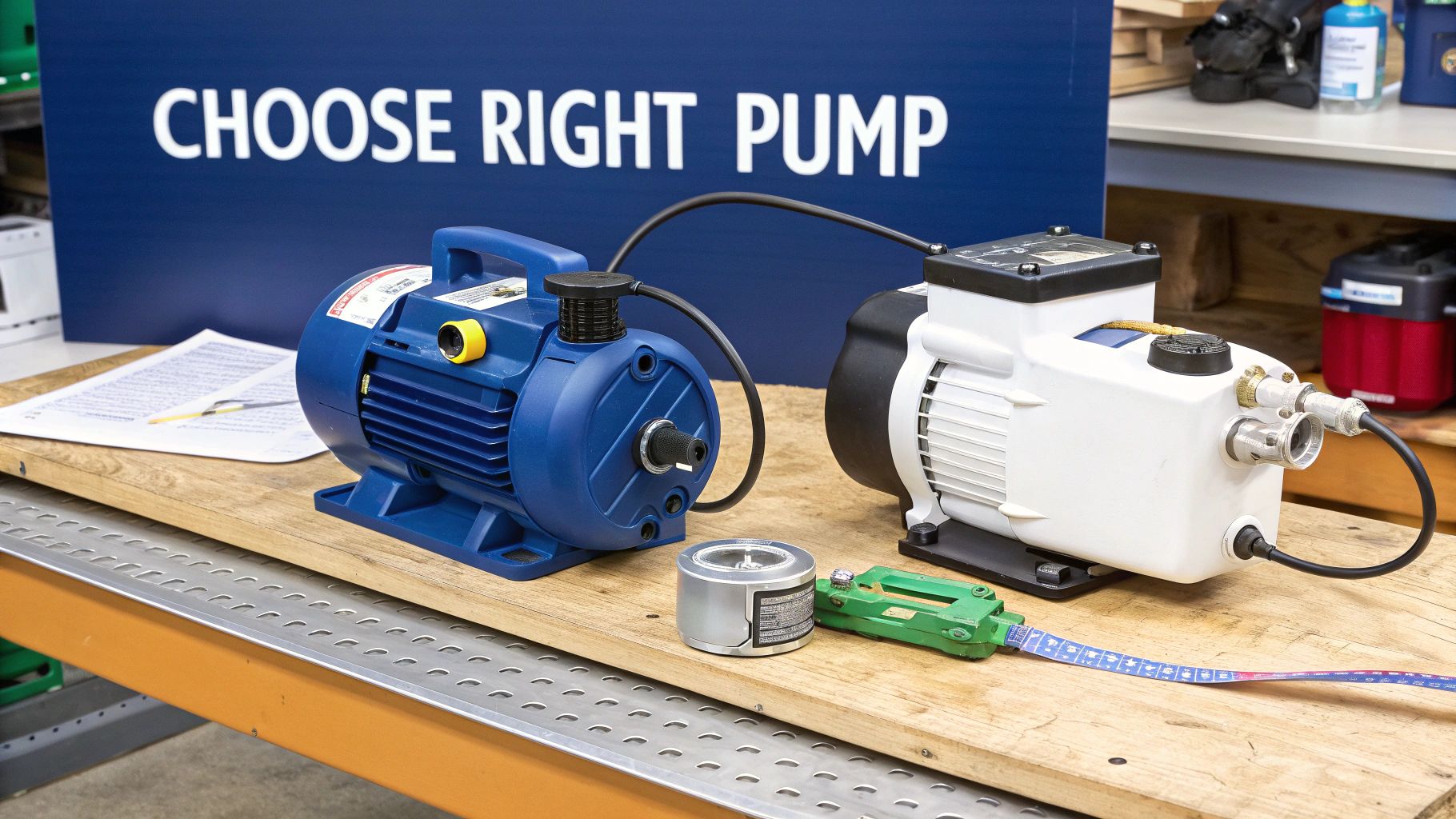
With so many options on the market, picking the right gas tank transfer pump can feel overwhelming. But it's not about finding the most powerful or expensive model; it’s about matching the tool to the job you need to do. If you focus on just a few key factors, you can easily find a pump that’s safe, efficient, and a perfect fit for your needs.
Think of it like choosing any other tool from your toolbox. You wouldn't use a sledgehammer to drive a finishing nail, right? The same logic applies here. The goal is to find that sweet spot between power, portability, and the right features to make refueling easier and safer, not more complicated.
Assess Your Fuel and Flow Rate Needs
First things first: what kind of fuel are you moving? Gasoline is extremely volatile and demands a pump with very specific safety features. Diesel, on the other hand, is less flammable, so you have a wider range of pump options. The most important thing is to make sure the pump is explicitly rated for the liquid you'll be transferring.
Next, you need to think about speed. The flow rate, measured in Gallons Per Minute (GPM), tells you how quickly a pump can move fuel from one tank to another.
- Small tanks (5-10 gallons): A lower GPM of 5-8 is perfect. A powerful pump can be too aggressive here, leading to splashes and dangerous spills.
- Medium tanks (10-50 gallons): A mid-range GPM of 8-15 gives you a great balance of speed and control. This is the ideal range for a lot of farm and recreational uses.
- Large tanks (50+ gallons): You’ll want a high-GPM pump of 15-25+ to avoid spending all day refueling. These are best suited for high-volume, stationary setups.
Matching the flow rate to your tank size isn’t just about efficiency—it's a critical safety step.
Consider Your Power Source and Location
Where you'll be working is probably the biggest factor in determining the right power source. This decision directly impacts where and how you can use the pump, so it's a big one.
-
12V DC Pumps: These are the undisputed champions of portability. Since they run off a standard vehicle battery, they’re ideal for refueling equipment in a remote field, on a boat dock, or anywhere far from an outlet. If you work on the go, a 12V DC pump is almost always your best bet.
-
120V AC Pumps: These are your stationary workhorses. If you have a large fuel drum in a workshop or barn and need to refuel equipment in that one spot, an AC pump delivers unbeatable power and speed.
-
Manual Pumps: For an emergency kit or for moving very small amounts of fuel infrequently, a manual hand pump is incredibly reliable and doesn't need any electricity.
The choice between a portable and a stationary pump is a crucial one. A powerful 120V pump is completely useless out in a field, just as a 12V pump might feel painfully slow for a busy commercial fueling station. Figure out your primary use case before you look at anything else.
Evaluate Essential Safety Features
When you’re dealing with flammable liquids, safety is not optional. A good gas tank transfer pump is designed from the ground up to minimize risk. You should always look for pumps with explosion-proof motors, which are sealed to prevent any internal sparks from igniting fuel vapors.
Another key feature is thermal overload protection. This function automatically shuts the motor off if it starts to overheat, preventing damage and significantly reducing the risk of a fire. Always check that the pump is UL or CSA listed—this certification means it has been rigorously tested to meet strict safety standards. If you're focused on on-the-go refueling, our guide to choosing a https://clixfueling.com/blogs/news/portable-gas-transfer-pump has some extra insights you might find useful.
Finally, look at what the pump is made of. A sturdy metal housing, usually cast iron or aluminum, will always be safer and last longer than plastic. High-quality hoses and secure, leak-proof fittings are just as important as the motor itself. Investing in a pump with these features ensures you’re buying a tool that’s not only effective but built to keep you safe.
Using Your Gas Transfer Pump Safely and Effectively
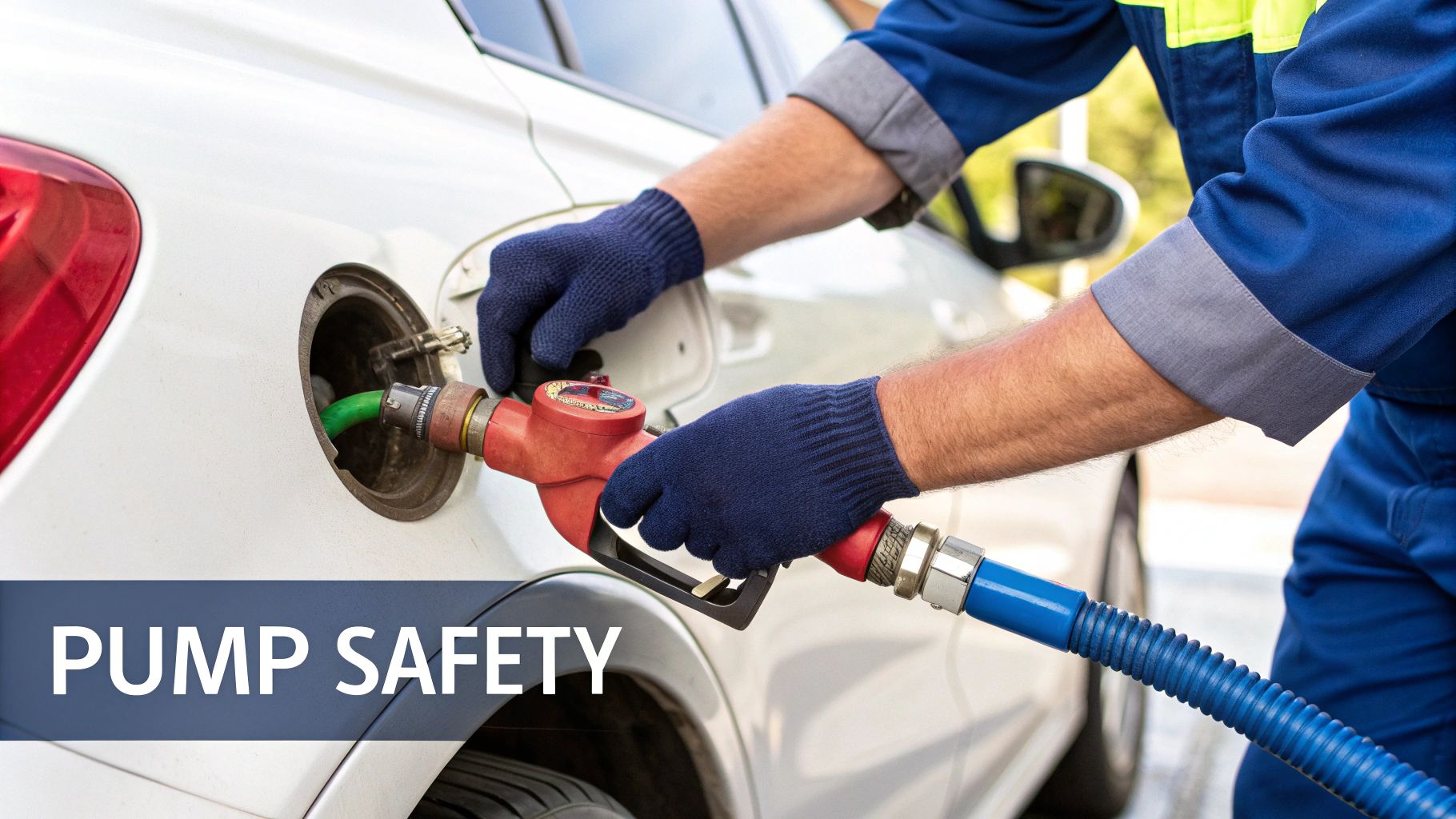
Having the right gas tank transfer pump is a great start, but knowing how to use it safely is what really counts. Let's be honest—handling fuel is serious business. It demands your full attention and a healthy respect for the process, because one careless moment can turn a simple task into a dangerous situation.
The good news is that the process isn't complicated. Following a few key steps every single time will ensure everything goes smoothly and without any spills. From the initial check to the final cleanup, we'll walk you through a routine that will protect you, your gear, and the environment.
Pre-Transfer Safety Inspection
Before you even think about starting the pump, get into the habit of doing a quick pre-transfer inspection. It takes less than a minute and can prevent a world of trouble. Think of it like a pilot’s pre-flight checklist—it’s a simple routine that guarantees you’re ready for safe operation.
First, give the hoses a once-over. Are there any cracks, kinks, or signs of brittleness? Next, check all the connection points where the hoses meet the pump and nozzle. Make sure they're tight and secure, as a loose fitting is one of the most common causes of messy, hazardous fuel spills.
Creating a Safe Workspace
Where you work is just as important as the equipment you use. Gasoline vapors are heavier than air and can settle in enclosed spaces, creating a real fire hazard. That brings us to rule number one: always operate your pump in a well-ventilated area. Outdoors is always the best bet.
Next, get rid of any potential ignition sources. That means no smoking, no open flames, and no other running engines nearby that could create a spark. Don't forget about static electricity, either. It’s an invisible risk, so always place your fuel containers directly on the ground to keep them properly grounded.
Safety isn't a single action but a constant state of awareness. The most effective safety tool is a clear, methodical approach that prioritizes eliminating ignition sources and ensuring proper ventilation before any fuel starts to flow.
The Step-by-Step Transfer Process
With your equipment checked and your area secured, you're ready to get started. Following these steps in order will make the process smooth and safe every time.
- Position Containers Correctly: Place the source fuel tank on the ground. Make sure the receiving tank is stable and easy to get to.
- Connect Hoses Securely: Drop the intake hose deep into the source tank. Put the nozzle firmly into the receiving tank's fill opening so it won't slip out.
- Power On and Monitor: For electric models, plug in the pump and turn it on. Keep a close eye on both tanks the entire time. Never walk away from a running pump.
- Shut Down Promptly: As soon as the transfer is done, switch the pump off immediately. To get the most life out of your pump, it's worth learning about preventing fuel pump burnout.
- Disconnect and Store: Carefully take out the nozzle and intake hose, letting any leftover fuel drain back into the containers. Cap both tanks tightly.
The job isn't done until everything is cleaned up and stored away. If a small spill happens, knowing how to manage it is crucial. Our guide on fuel spill cleanup procedures has you covered. Finally, store your pump in a dry, ventilated spot away from direct sun and heat to keep it ready for the next job.
Common Applications for Fuel Transfer Pumps
https://www.youtube.com/embed/f5q30_MaYpg
A gas tank transfer pump isn't just another gadget for the garage—it's a problem-solver for anyone who needs to move fuel. When you see one in action, you realize how it can turn a messy, frustrating chore into a quick and clean process.
Think about a farmer out in a massive field, needing to refuel a combine harvester miles from the nearest tank. Instead of wrestling with heavy, sloshing fuel cans, they can use a portable 12V pump to get the job done quickly and safely. That means less downtime when every minute of the harvest counts.
Automotive and Job Site Essentials
In the automotive world, these pumps are great for more than just roadside emergencies. They’re perfect for siphoning fuel from a storage can into your car without spilling a drop, which is a lifesaver for protecting a classic car’s paint job.
Construction sites are another place where these pumps are workhorses. Crews can refuel generators, heavy machinery, and light towers right where they sit, which beats making constant trips to a gas station. Keeping equipment running smoothly keeps the project on schedule. This kind of on-site efficiency is a big reason why the industrial and agricultural fuel pump market is projected to hit USD 176 million by 2032. You can dive deeper into what's driving this growth with this in-depth analysis.
A fuel transfer pump bridges the gap between your fuel supply and your equipment, no matter where you are. It provides a safe, efficient, and mobile refueling solution that saves time, prevents waste, and eliminates physical strain.
Marine and Recreational Game-Changers
If you’re a boater or love the outdoors, a transfer pump is pretty much essential gear. It just makes life easier in so many situations.
- Marine Fueling: Imagine refueling your boat from a jerry can without spilling a single drop into the water. A pump makes that possible.
- Powersports: Need to top off your ATV or snowmobile deep in the backcountry? A portable pump is your best friend.
- RV Adventures: Easily move fuel to your RV's generator for that off-grid power you need to stay comfortable.
In every one of these scenarios, a transfer pump handles the logistics of refueling so you can get back to the fun part of your adventure.
Got Questions? We’ve Got Answers
Even after getting the hang of how these pumps work, a few questions might pop up. Let's tackle some of the most common ones so you can handle your pump like a pro.
Can I Use a Gas Pump for Water or Oil?
It’s tempting to think a pump is a pump, but you should never use a gas tank transfer pump for anything other than its intended fuel. It all comes down to safety and design.
Pumps built for gas or diesel have special seals and components that won't break down from corrosive fuels and are designed to prevent sparks. Pumping water can rust the pump's guts from the inside out, while thicker fluids like oil can easily overwhelm and burn out the motor. Stick to the right tool for the job to avoid damage and dangerous situations.
How Do I Clean and Store My Transfer Pump?
A little bit of care goes a long way in keeping your pump working for years. After you're done transferring fuel, run the pump dry for just a few seconds. This simple step purges any leftover fuel from the hoses and internal parts.
When it's time to put it away, just follow these quick tips:
- Wipe It Down: Give the outside a quick clean to get rid of any grime or fuel residue.
- Store It Safely: Find a dry, well-ventilated spot away from sunlight, crazy temperatures, and anything that could ignite fumes.
- Coil Hoses Loosely: Don't crimp the hoses by wrapping them too tightly. Gentle loops prevent cracking.
A clean pump is a reliable pump. Spending a minute on cleanup ensures it’s ready and safe for the next time you need it, preventing unnecessary wear and tear.
Is a Faster Pump Always Better?
Not necessarily. While a high flow rate looks good on paper, the best speed really depends on what you're filling. Think of it like a garden hose—you wouldn't use a fire hose to water a delicate flower pot.
A beefy 20 GPM pump is a massive time-saver for topping off a 100-gallon farm tank. But try using that same pump on a small 5-gallon can for your ATV, and you're in for a messy, wasteful splash-fest. The real goal is to match the pump’s GPM to the tank’s size for a smooth, controlled transfer.
Ready to make your fueling tasks safer and simpler? The innovative design from CLiX Fueling Solutions offers a spill-free, stress-free experience every time. Explore the CLiX difference.

